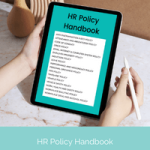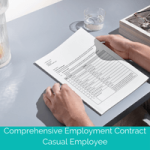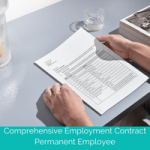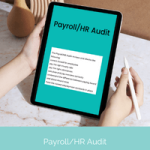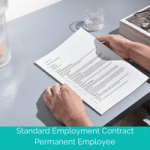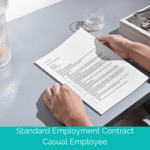As an Australian employer, it’s vital to be fully informed about the various leave entitlements for your employees.
All permanent employees are entitled to paid leave. While casual employees receive a 25% loading on their hourly rate to compensate for paid leave, but they do have some entitlements to unpaid leave in particular circumstances.
What Types of Leave are Employees Entitled To?
There are various types of leave entitlements for employees, including:
- Annual leave
- Personal/Carer’s leave
- Public holidays
- Compassionate leave
- Domestic and family violence leave
- Parental leave
- Community Service leave
The National Employment Standards (NES) set out the minimum leave entitlements for Australian employees.
Annual Leave
Full-time employees are entitled to four weeks annual leave per year, while part-time employees can take four weeks leave on a pro-rata basis, depending on the number of hours they work per week.
Beyond annual leave, let’s explore other leave entitlements.
Personal/Carer’s Leave (Sick and Carer’s Leave)
Full-time employees are entitled to 10 days of personal/carer’s leave per year, while part-time employees receive 10 days on a pro-rata basis.
Personal/carer’s leave allows employees to take time off because of a personal illness or injury.
Carer’s leave can be taken when caring for immediate family members or household members who are sick or injured or assisting during a family emergency. Note: carer’s leave is deducted from an employee’s personal/carer’s leave balance.
Public Holidays
Public holidays can differ depending on the state or territory. But there are also national public holidays that are the same across Australia.
Employees have the right to take the day off on a public holiday and be paid. If an employee is required to work on a public holiday, penalty rates apply.
Compassionate and Bereavement Leave
Compassionate leave, also know as bereavement leave, allows employees to take time off to deal with family emergencies, such as the life threatening illness or injury or the death of an immediate family or household member. Employees may also take compassionate leave if they have a miscarriage, or their current spouse or de facto partner has a miscarriage.
Employees have the right to take up to two days of compassionate leave each time they meet the eligibility criteria. This can be taken as two consecutive days or two separate days, or as agreed with the employer. Compassionate leave doesn’t accumulate and is not part of the employee’s other leave entitlements. Employees can take compassionate leave whenever they need it and meet the eligibility criteria.
Employers can ask for evidence to support the taking of compassionate leave.
Definition of an Immediate Family Member or Household Member
Where leave entitlements refer to immediate family members or household members, it’s important to know who this refers to.
An employee’s immediate family member includes their spouse, former spouse, de facto partner, former de facto partner, child, parent, grandparent, grandchild, sibling – or a child, parent, grandparent, grandchild or sibling of the employee’s spouse or de facto partner (or former spouse or de facto partner).
This definition encompasses step family members, such as step-parents, step-children and adoptive relations.
A household member refers to someone who lives with the employee.
Family & Domestic Violence Leave
A relatively new type of leave, family and domestic violence leave is available to employees of non-small business employers from 1 February 2023. For employees of small businesses, the leave is available from 1 August 2023.
All full-time, part-time and casual employees are eligible for family and domestic violence leave every year. The NES guarantees the entitlement to paid leave to deal with family and domestic violence. This is a minimum leave entitlement, the same as annual leave, sick leave and carer’s leave.
Long Service Leave
The majority of employees are entitled to long service leave under the long service leave legislation in their respective state or territory. These laws specify the following details:
- The minimum length of employment required to be eligible for long service leave, such as 7 years or 10 years
- The amount of long service leave an employee is entitled to
In certain states and territories, long term casual workers are also entitled to long service leave.
Community Service Leave
All employees, including casuals, are entitled to community service leave, which allows them to participate in unpaid voluntary emergency management activities, such as the Rural Fire Services, SES or army reserves, or to attend jury duty.
For jury duty, an employee must provide the employer with proof they are attending jury selection or jury duty.
For the first 10 days of jury duty, full-time and part-time employees are entitled to “make-up pay”. This means the employer must pay the difference between any payment the employee receives from the court for jury duty (excluding expenses) and the employee’s base pay rate for the ordinary hours they would have worked. Employers have the right to request evidence from employees before paying make-up pay.
To take community service leave, employees must notify their employer of the expected period of leave as soon as possible and provide evidence of their attendance at voluntary emergency management activities, jury selection or jury duty if requested.
Parental Leave
Parental leave can be taken by an employee at the time of the birth or adoption of a child. Employees are entitled to up to 12 months of unpaid parental leave with the option to request an additional 12 months of leave.
To be eligible for parental leave, employees must have worked for their employer for at least 12 months before the expected date of birth or adoption, or when the leave starts if the leave is taken after another person has cared for the child or taken parental leave. Parental leave is only available to employees who have or will have responsibility for the care of a child.
Casual employees may be eligible for unpaid parental leave if they have worked for their employer on a regular and systematic basis for at least 12 months, and would have had a reasonable expectation of continuing work with the employer if not for the birth or adoption of a child.
A Final Word on Leave Entitlements
As an employer, you must be fully informed on the leave entitlements for all employees. Researching this information can be time-consuming and often confusing. If you’re unsure of any aspect of minimum leave entitlements or you need assistance with writing a leave policy, My HR Partner is here to help.
For further expert advice on human resources or if you have any questions about anything HR related, get in touch.
Karen Hillen is your HR Partner, she helps businesses by providing HR support and advice services.
For the right HR support and advice, book a My HR Partner HR Advice call with Karen Hillen.
https://booking.myhrpartner.com.au/15minute-hr-advice-call
https://booking.myhrpartner.com.au/30minute-hr-advice-call
My HR Partner memberships provide 24/7 access to employment contracts, HR policies and documents, and HR advice calls. These services are tailored to the member’s needs and can be accessed on demand through phone or email for performance management issues, pay rates and Award advice.
Find out more about My HR Partner HR Hub membership here:


